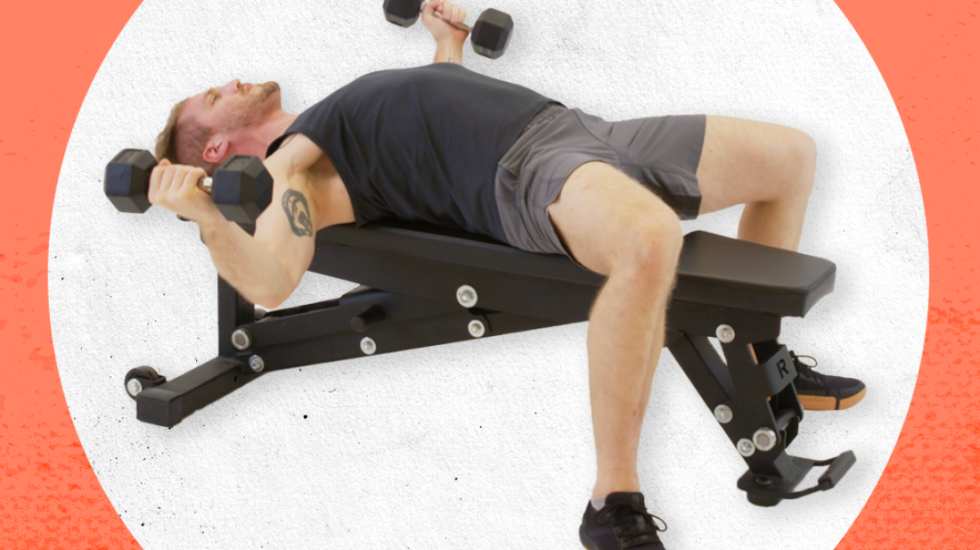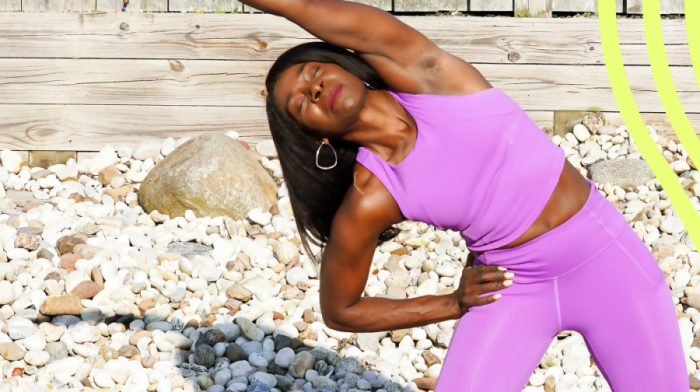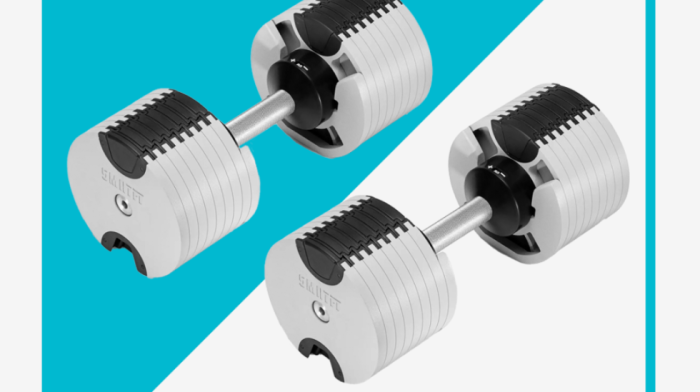CHEST DAY WORKOUTS generally fall into one of two camps. The first (and most prevalent) is pressing exercises, like the all-important bench press and pushup, since your chest is responsible for pushing movements. That's not the only function of the chest, however; the big muscle group at the top of your torso is also responsible for adducting your arms, the movement of your arms toward the midline of your body. One of the most common exercises that harnesses this function is our focus here: the fly.
There are multiple fly variations, depending on the gear you have on hand and the position you take to perform the exercise. The simplest (and most likely you'll see out on your gym floor) is the dumbbell chest fly. The classic bodybuilding staple has been used for years to develop chest size and strength, working that essential function of the chest that's too often overlooked in favor of big bench press sessions.
Just because the dumbbell chest fly is simple, however, doesn't mean it's without subtleties. There's more to the movement than just kicking back on the bench and flapping away with a set of dumbbells in each hand. Check out this guidance from Men's Health fitness director Ebenezer Samuel, C.S.C.S. and fitness editor Brett Williams to find out how you can fit the fly into your workouts—or if there might be a better way for you to build up that chest.
Benefits of the Bench Dumbbell Chest Fly
THE DUMBBELL CHEST fly allows you to add chest adduction to your training plan. This concentrated squeeze can be the key to muscle growth, most specifically helping to target the inner part of the chest, which isn't as much a focus on pressing movements.
That said, the bench dumbbell chest fly might not be the best option for you to work that chest adduction into your routine. The exercise can be riskier and less effective than other exercises—when you put your shoulder joints under so much stress, you're putting your long-term health at risk. Before adding the dumbbell chest fly to your routine, consider what alternatives you might try first.
How to Do the Bench Dumbbell Fly
FOLLOW THESE FORM cues to learn how to do the bench dumbbell fly. Once you've read the step-by-step directions, follow along for some higher-level tips from Samuel to dive deeper into the exercise.
Squeeze at the Top
Eb says: The true benefit and magic of the dumbbell fly happens not when your arms are at their widest, but when you bring your arms together. It's here that you get the chance to squeeze your pectoral fibers and really promote chest growth. Focus on this squeeze, thinking of lingering at the top for a good one second to get the most out of the fly.
Avoid touching the dumbbells at the top, too, because doing so removes that chance to really squeeze your pecs. Just as importantly, if you're driving the dumbbells up so quickly that they're clanking together, you're doing the motion without the precision and control required to really get that chest squeeze. Take your time with each rep.
Never Lower Too Deep
Eb says: Remember: The magic of the fly occurs at the top of the movement, not the bottom. So don't try too hard to overstretch your pecs by lowering your shoulders extra-deep.
Aim to get your upper arms parallel with the ground, but don't worry about going too deep on them. This isn't an exercise for flexibility; you're using the movement to build size, strength, and definition. And not every person has perfect shoulder range of motion, especially if you work a desk job. So lower the dumbbells only until you feel a slight stretch in your chest; if you feel this in your shoulders or biceps, you're over-stretching. A good starting point: Think about lowering until your upper arms are parallel with the ground or just a few degrees deeper.
Never Stop Squeezing Your Shoulder Blades
Eb says: Start each set of dumbbell flies by driving your shoulder blades into the bench, and think about squeezing them as you lower the weights. This will help protect your shoulders. As you begin to fly up, though, continue to squeeze your shoulder blades together. This does two things. First off, it will once again help you protect your shoulders. It's really easy to compromise joint space in the shoulder as you fly up, giving your rotator cuff tendons less space to move. By squeezing your shoulder blades, you help maintain that.
Even better, if you continue to squeeze your shoulder blades together when you finish the dumbbell fly, you'll challenge your chest to really squeeze at the top of each rep. The difference is subtle: If you release your shoulder blades, you can essentially bring the entire shoulder complex along for the ride at the top of the rep. But if you keep squeezing hard on that rhomboid, it forces your shoulder blades to stay tight and keeps your shoulders down. That means the finishing squeeze on the dumbbell fly winds up coming purely from a pectoral contraction. Even if this feels like it cuts your range of motion, it's not actually doing so. It's simply forcing your pecs to fully work through their natural range, instead of pointlessly over-extending the movement.
How to Add the Dumbbell Chest Fly to Your Workouts
ADD THE DUMBBELL chest fly to your workouts once or twice a week at most, shortly after you finish your big time compound pressing exercises. On that note, the dumbbell chest press is not a move to do with heavy weights. Samuel suggests starting at about half the amount you're using for dumbbell bench presses, then adjusting from there as you focus on nailing the form. Begin with three sets of 10 to 12 reps, working to emphasize the chest squeeze at the top for every single one.


























Comments (0)